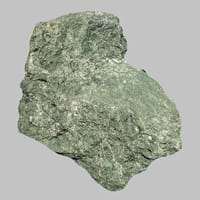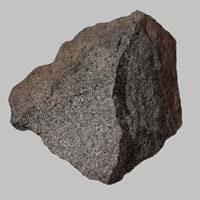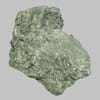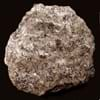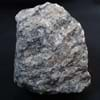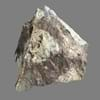Serpentinite and Pantellerite
Definition
Definition
A hydration and metamorphic transformation of ultramafic rock from the Earth's mantle is called as serpentinization, a group of minerals is formed by serpentinization compose rock 'serpentinite'.
Pantellerite is a peralkaline rhyolite. It has a higher iron and lower aluminium composition than comendite
History
Origin
USA
Strait of sicily
Discoverer
Unknown
Unknown
Etymology
From English word serpentinization.
From Pantelleria, a volcanic island in the Strait of Sicily
Class
Metamorphic Rocks
Igneous Rocks
Sub-Class
Durable Rock, Medium Hardness Rock
Durable Rock, Hard Rock
Family
Group
Not Applicable
Volcanic
Other Categories
Fine Grained Rock, Opaque Rock
Fine Grained Rock, Opaque Rock
Texture
Texture
Earthy
Eutaxitic
Color
Black, Brown, Colourless, Green, Grey, White
Dark Greenish - Grey
Maintenance
Less
Less
Durability
Durable
Durable
Water Resistant
Yes
Yes
Scratch Resistant
No
Yes
Stain Resistant
Yes
Yes
Wind Resistant
No
Yes
Acid Resistant
No
Yes
Appearance
Rough and Dull
Layered and Foliated
Uses
Architecture
Interior Uses
Decorative Aggregates, Interior Decoration
Not Yet Used
Exterior Uses
As Building Stone, Paving Stone, Garden Decoration, Office Buildings
Not Yet Used
Other Architectural Uses
Curbing
Not Yet Used
Industry
Construction Industry
As Dimension Stone, Cement Manufacture, for Road Aggregate, Making natural cement
NA
Medical Industry
Not Yet Used
Not Yet Used
Antiquity Uses
Artifacts, Jewellery, Monuments, Sculpture
Artifacts, Sculpture
Other Uses
Commercial Uses
Commemorative Tablets, Creating Artwork
Creating Artwork
Types
Types
Jadeitite
Pantelleritic Ignimbrite
Features
Host Rock for Lead
High Fe content
Archaeological Significance
Monuments
Used
Not Yet Used
Famous Monuments
Data Not Available
Not Applicable
Sculpture
Used
Not Yet Used
Famous Sculptures
Data Not Available
Not Applicable
Pictographs
Used
Not Used
Petroglyphs
Used
Not Used
Figurines
Used
Not Yet Used
Fossils
Absent
Absent
Formation
Formation
Due to change in environmental conditions, rocks are heated and pressurized deep inside the Earth's surface. Serpentinite is formed from the extreme heat caused by magma or by the intense collisions and friction of tectonic plates.
Pantellerite is a fine-grained, hard rock which is a type of metasomatite, essentially altered basalt. It forms with or without crystallization, either below the surface as intrusive rocks or on the surface as extrusive rocks.
Composition
Mineral Content
Carbonate, Magnetite, Pyrrhotite, Serpentine, Sulfides
Amphibole, Feldspar, Ilmenite
Compound Content
Ca, CaO, Carbon Dioxide, KCl, MgO, Sulfur Dioxide, Sulphur
Al, Fe
Transformation
Metamorphism
Yes
Yes
Types of Metamorphism
Burial Metamorphism, Cataclastic Metamorphism, Contact Metamorphism, Hydrothermal Metamorphism, Impact Metamorphism
Burial Metamorphism, Cataclastic Metamorphism
Weathering
No
Yes
Types of Weathering
Not Applicable
Biological Weathering, Chemical Weathering
Erosion
Yes
Yes
Types of Erosion
Chemical Erosion, Coastal Erosion, Glacier Erosion, Sea Erosion, Wind Erosion
Chemical Erosion, Coastal Erosion, Glacier Erosion, Sea Erosion, Water Erosion, Wind Erosion
Properties
Physical Properties
Hardness
3-5
6-7
Grain Size
Very fine-grained
Fine Grained
Fracture
Uneven
Sub-conchoidal
Streak
White, Greenish White or Grey
Unknown
Porosity
Less Porous
Less Porous
Luster
Waxy and Dull
Earthy
Compressive Strength
310.00 N/mm2
2
Not Available
Cleavage
Irregular
Conchoidal
Toughness
7
2
Specific Gravity
2.79-3
Not Available
Transparency
Opaque
Translucent to Opaque
Density
2.5-3 g/cm3
Not Available
Thermal Properties
Specific Heat Capacity
0.95 kJ/Kg K
9
Not Available
Resistance
Heat Resistant
Heat Resistant
Reserves
Deposits in Eastern Continents
Asia
India, Saudi Arabia, Singapore, South Korea
China, India
Africa
Ethiopia, Western Africa
Angola, Egypt, Madagascar, Namibia, Nigeria
Europe
England, Georgia, Switzerland, United Kingdom
Germany, Iceland, Ireland, Italy, Spain, United Kingdom
Others
Not Yet Found
Not Yet Found
Deposits in Western Continents
North America
Canada
Canada, USA
South America
Colombia
Argentina, Bolivia, Brazil, Colombia, Ecuador
Deposits in Oceania Continent
Australia
Central Australia, New South Wales, New Zealand, Western Australia
Central Australia, Queensland, Western Australia
All about Serpentinite and Pantellerite Properties
Know all about Serpentinite and Pantellerite properties here. All properties of rocks are important as they define the type of rock and its application. Serpentinite belongs to Metamorphic Rocks while Pantellerite belongs to Igneous Rocks.Texture of Serpentinite is Earthy whereas that of Pantellerite is Eutaxitic. Serpentinite appears Rough and Dull and Pantellerite appears Layered and Foliated. The luster of Serpentinite is waxy and dull while that of Pantellerite is earthy. Serpentinite is available in black, brown, colourless, green, grey, white colors whereas Pantellerite is available in dark greenish - grey colors. The commercial uses of Serpentinite and Pantellerite are commemorative tablets, creating artwork.
|
||
|
||
|
